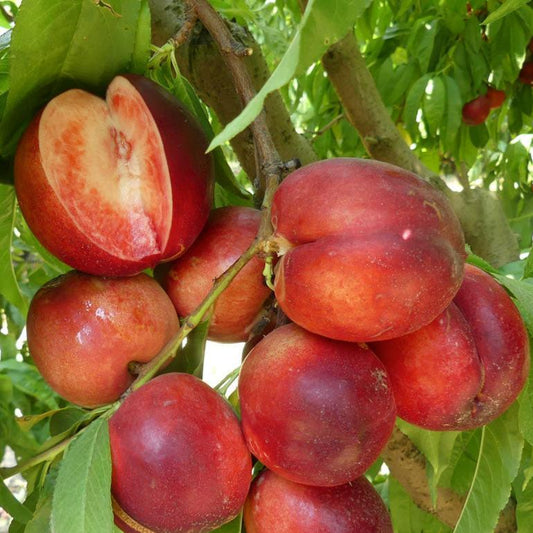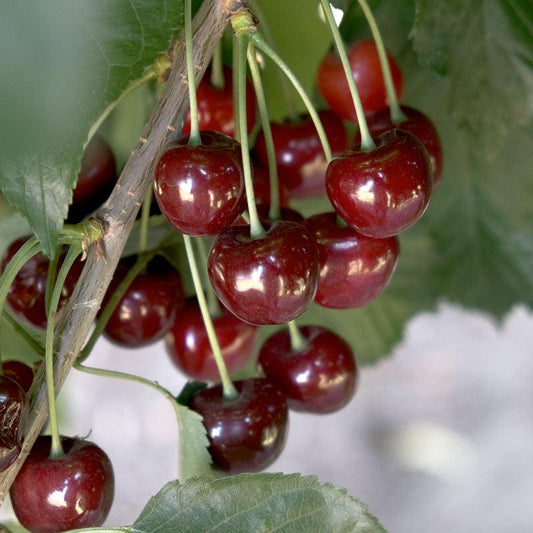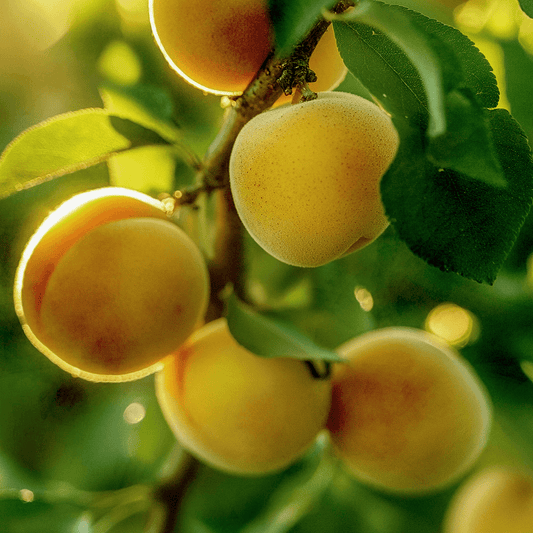Dormant Fruit Trees: Preparing, Protecting, and Watching Them Wake
If you’ve ever wondered why your fruit trees look like lifeless sticks in winter—and then burst into blossoms a few months later—you’re seeing dormancy in action. Dormancy is a natural “rest” period that helps trees survive cold temperatures and gear up for strong spring growth and future fruit production.
Dormancy is also why nurseries can safely ship bare root fruit trees in a box. While a dormant fruit tree looks quiet on top, its root system is still alive and ready to grow once planted.
This guide will walk you through when do fruit trees go dormant, how to care for them in this resting phase, and what to expect when they wake up in spring.

What Does Dormancy Mean for Fruit Trees?
Dormancy is like hibernation for trees. As days shorten and temperatures drop in fall, trees go dormant to protect themselves from winter stress.
How Dormancy Works
- The tree senses the time of year through shorter day length and cooler nights.
- Growth slows, leaves drop, and from the outside the tree has no leaves and seems dead.
- Inside, the tree is conserving energy and protecting its tissues from cold damage.
Most temperate fruit trees—including apple trees, pears, peaches, cherries, plums, and some nuts—follow this pattern. To dive deeper into species options, check out the overview in the Fruit Trees article and browse the full fruit & nut trees collection.
Chill Hours, Dormancy, and Bud Break
A key piece of the dormancy puzzle is chill hours. These are the cool hours (usually between about 32°F and 45°F) a tree needs in winter.
Chilling Requirement and Bud Break
Each variety has a chilling requirement—a minimum number of chilling hours it must experience before it can safely wake up:
- While chilling is being met, growth-inhibiting hormones keep the tree asleep.
- Once the chilling requirement is satisfied and weather warms, the tree will break dormancy.
- You’ll see bud break, followed by producing flowers and new leaves, then eventually fruit.
Learn how to calculate chill for your area in Fruit Tree Chill Hours Explained and get a quick overview in “Fruit and Nut Trees Need to Chill Out for Winter”: Tip of the Week. You can also confirm your climate with What Is My Growing Zone?.

When Do Fruit Trees Go Dormant?
Dormancy timing depends on climate and species, but here’s a general guide:
Apples, Pears, and Other Cold-Hardy Trees
So, do apple trees go dormant? Yes—apple trees are classic deciduous trees.
- When do apple trees go dormant? Usually in late fall after a few hard frosts.
- A dormant apple tree will have bare branches, tight buds, and no new growth.
Explore cold-hardy types and chill needs in the bare root apple trees collection and pear trees collection.
Peaches, Nectarines, Cherries, and Plums
Stone fruits also rest in winter:
- When do peach trees go dormant? Typically around late fall, similar to apples, once days shorten and nights cool.
- Nectarines, cherries, and plums follow the same pattern, though some varieties wake earlier and are more frost-sensitive.
See options here:
Citrus and Other Evergreen Trees
Citrus behaves differently. While they slow down in cool weather, they don’t fully drop leaves and go bare like deciduous trees. Browse citrus trees if you garden in mild climates.

Caring for Dormant Fruit Trees (Fall & Winter)
Even when dormant fruit trees look lifeless, they still benefit from thoughtful care.
Planting and Heeling In Bare Root Trees
Winter is prime time for planting bare root fruit trees.
- Handle roots carefully and keep them moist and cool.
- If you can’t plant right away, “heel in” your trees temporarily—this is demonstrated in the video Heeling In Bare Root Trees.
- For confidence when ordering, see the Dormant Tree Plant Limited Warranty.
You’ll find many dormant trees ready to ship in the fruit & nut trees collection.
Mulch, Moisture, and Frost Protection
- Apply mulch (like biodegradable mulch) around the drip line to retain soil moisture and buffer soil temperature.
- Even though the tree has no leaves, a young tree still needs occasional water in dry winters so roots don’t dry out.
- For sudden freezes, especially near bud break, use frost protection products to shield blossoms and tender shoots.
Pruning and Pest Management in Dormancy
Dormancy is a great time of year to shape and clean up your trees.
Pruning While Trees Are Asleep
When dormant fruit trees aren’t actively growing, you can make larger cuts with less stress:
- Remove dead, damaged, or crossing branches.
- Open up the canopy to sunlight and airflow.
See exactly how in the video How to Prune Fruit Trees and refine your technique with Reasons for Summer Pruning Fruit Trees and Summertime Fruit Tree Care for later in the year.
Controlling Pests and Diseases
Dormancy is also a strategic time to tackle pests and diseases:
- Remove mummified fruit and diseased wood.
- Plan your preventative sprays and practices with Spring Disease Control in Your Orchard.
Spring Awakening: When Trees Break Dormancy
After enough chill and a stretch of milder weather, your dormant fruit tree will start to wake:
- Buds swell and change color.
- Bud break happens as leaves and blossoms push out.
- Soon the tree is producing flowers, which is the first step toward producing fruit.
If your trees are cold hardy and matched to your climate (see What Is My Growing Zone?), they will handle this transition more smoothly and support strong fruit set.
For deeper learning and seasonal planning, two great references are The Home Orchard and Fruit Gardener’s Bible.
Conclusion
Dormancy may look like “nothing is happening,” but it’s a crucial chapter in your orchard’s year. Understanding when do fruit trees go dormant, how chill hours work, and what to do while your trees rest will set you up for healthier growth, stronger blooms, and better fruit production every spring.









